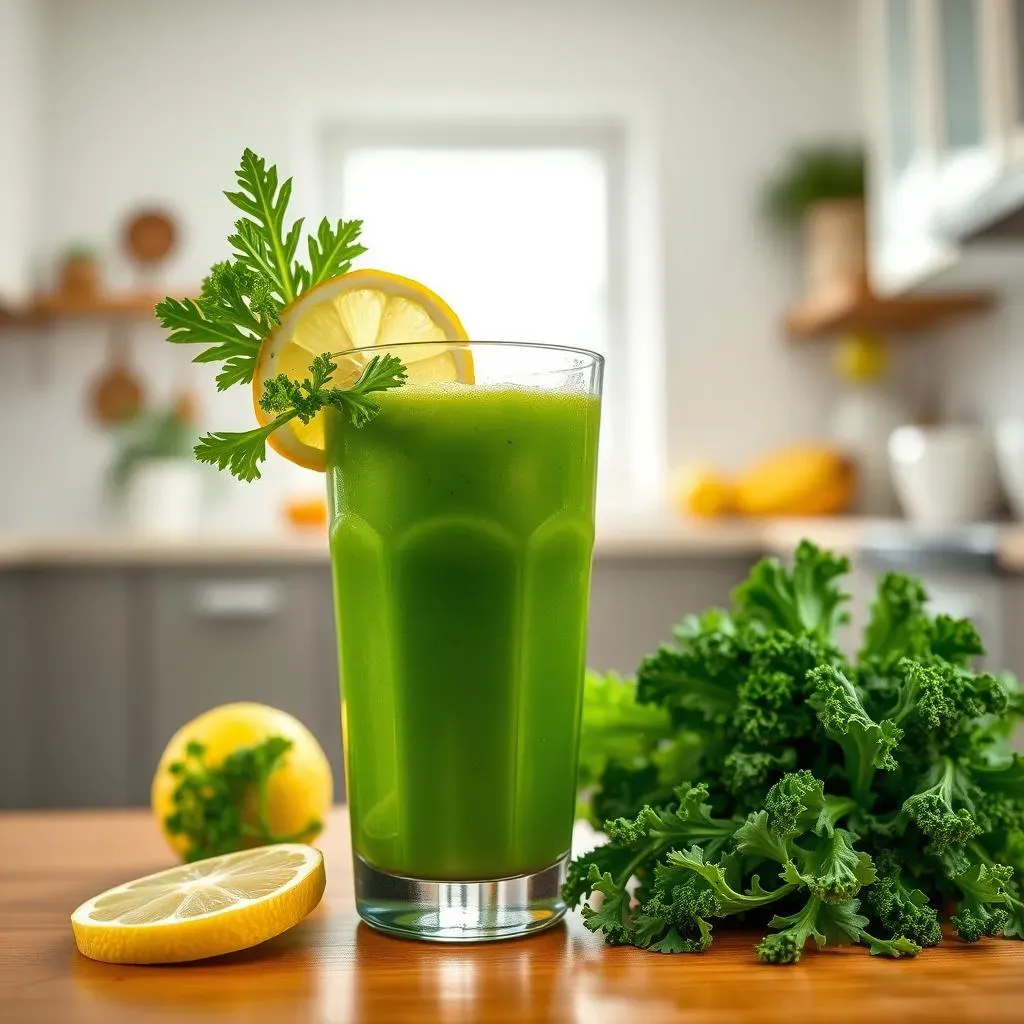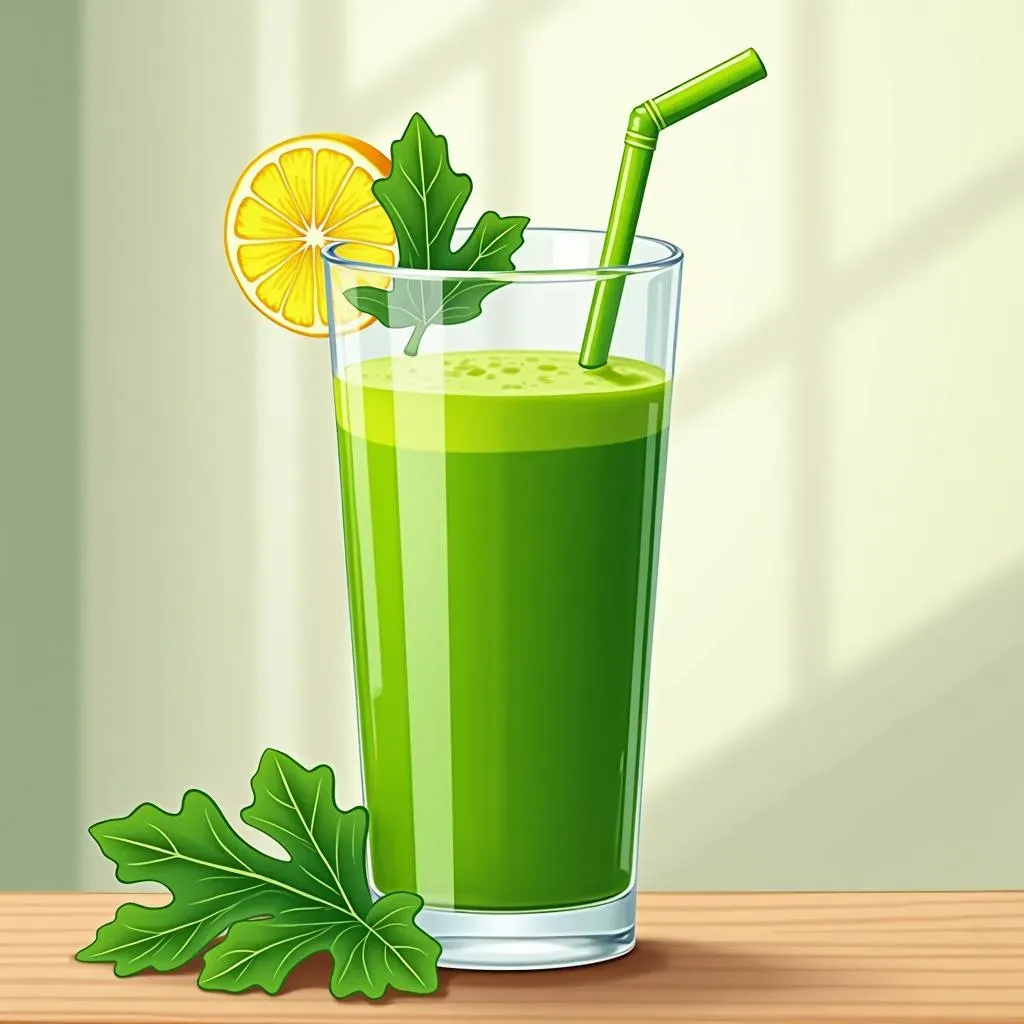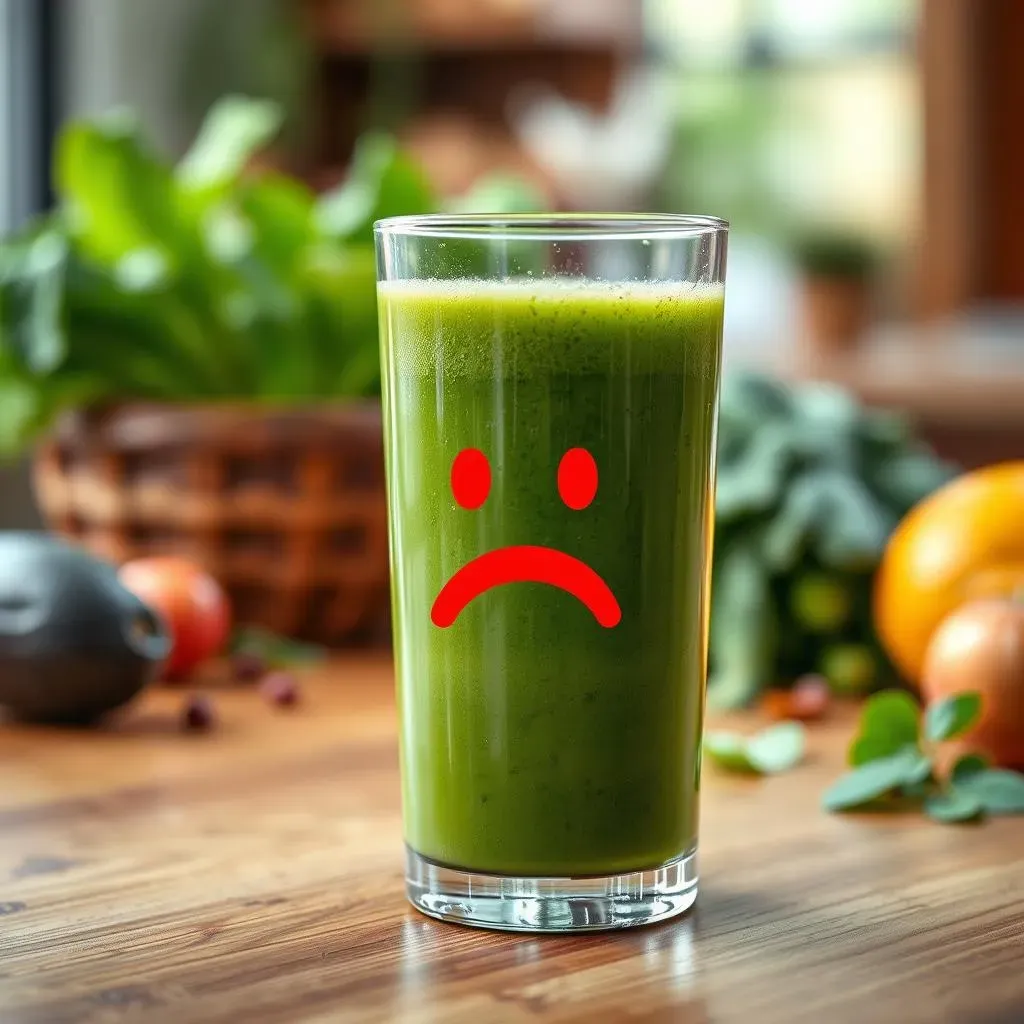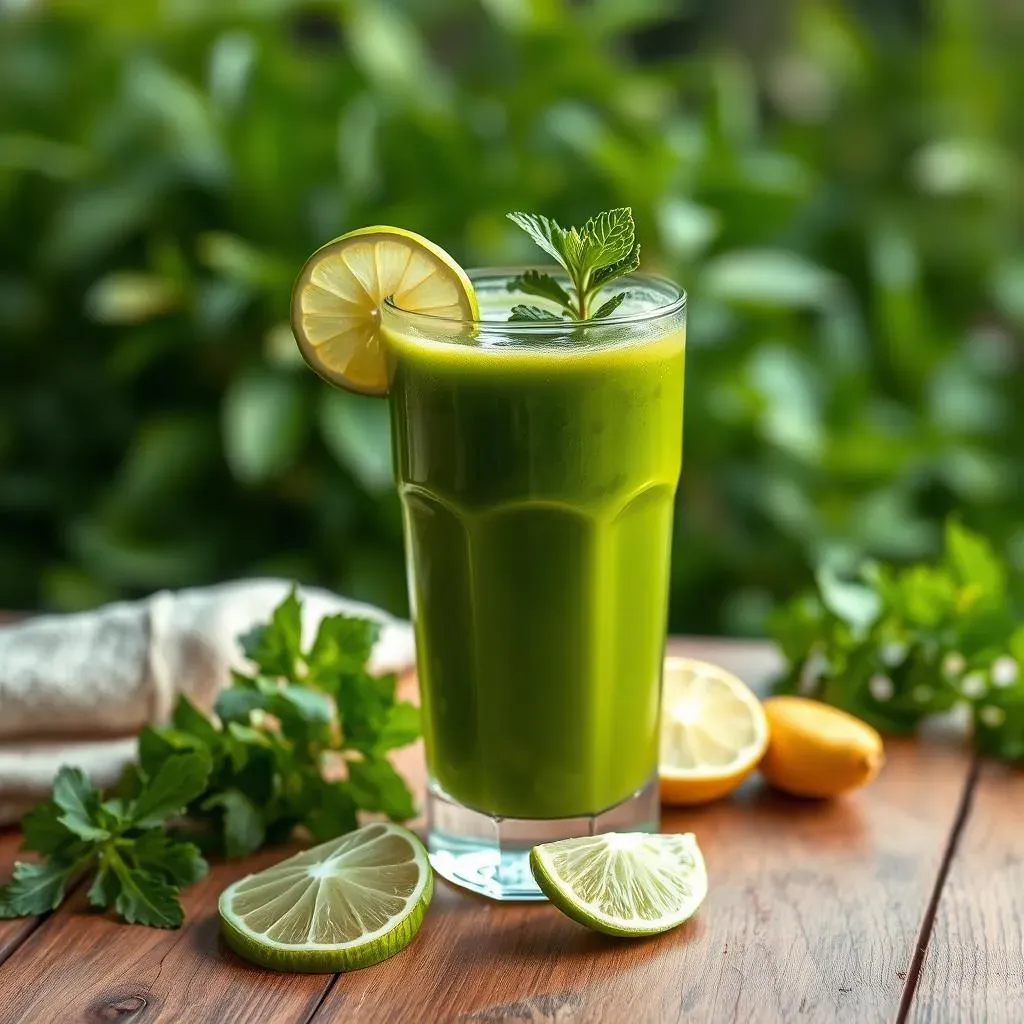Table of Contents
In a world obsessed with quick fixes and wellness trends, green detox juice has surged in popularity. But what is green detox juice, really? Is it the magic elixir promised by Instagram influencers and health gurus, or just another overhyped fad? This article dives deep into the murky green depths to separate fact from fiction. We'll explore what goes into these vibrant concoctions, from spinach and kale to apples and lemons, and whether they live up to the hype. We'll also weigh the potential health benefits against the possible downsides, like sneaky sugar content and oxalate overload. By the end, you'll have a clear understanding of whether green detox juice deserves a place in your diet, or if you're better off sticking to whole fruits and veggies. Get ready to blend your way to the truth!
What Exactly Is Green Detox Juice?

What Exactly Is Green Detox Juice?
The Basic Blend
so you've probably seen those vibrant green drinks popping up everywhere, from juice bars to your friend's Instagram feed. But let's break down what exactly is green detox juice. At its core, it's a blend of green vegetables – think spinach, kale, cucumber, celery – often mixed with fruits like apples or lemons to sweeten the deal. The idea is to extract the juice, leaving behind the pulp and fiber. This concentrated liquid is then consumed with the intention of, well, detoxifying your body.
But here's the thing: the term "detox" is a bit of a buzzword. Your body already has a built-in detoxification system – your liver and kidneys. They work tirelessly to filter out toxins. So, the claim that green juice magically eliminates all the bad stuff is a bit of a stretch. However, that doesn't mean green juice is entirely without merit. It's more about flooding your system with nutrients from those veggies and fruits.
Homemade vs. Store-Bought
Now, you've got options when it comes to getting your green juice fix: you can make it at home or buy it pre-made. Homemade gives you complete control over the ingredients. You know exactly what's going in – and what's staying out. This is especially important if you're watching your sugar intake or want to avoid certain additives.
Store-bought green juices, on the other hand, offer convenience. Grab a bottle and go! But be warned: many commercial versions are loaded with added sugars to make them more palatable. Always read the label carefully. Also, consider the pasteurization process. Some juices are pasteurized to extend shelf life, which can destroy some of the beneficial enzymes and nutrients. Freshly made, unpasteurized juice is generally considered the most nutritious option, but it also spoils faster.
The Amazing Benefits of Green Detox Juice: Fact or Fiction?

The Amazing Benefits of Green Detox Juice: Fact or Fiction?
Vitamin and Mineral Powerhouse
so let's get into the nitty-gritty of the supposed amazing benefits. Green juice is often touted as a vitamin and mineral powerhouse, and there's definitely some truth to that. I mean, you're essentially condensing a bunch of leafy greens and other veggies into a concentrated shot. Think about it: spinach is packed with vitamin K and folate, kale is loaded with vitamins A and C, and cucumbers provide hydration and some potassium. When you juice these things, you're getting a decent dose of these nutrients.
And because the nutrients are in liquid form, some argue they're more easily absorbed by the body. However, it's not like your digestive system suddenly shuts down when you eat a salad. Your body is pretty good at extracting nutrients from whole foods. So, while green juice can provide a quick nutrient boost, it's not necessarily superior to eating your veggies.
Nutrient | Potential Benefit | Found In |
|---|---|---|
Vitamin K | Blood clotting, bone health | Spinach, Kale |
Vitamin A | Vision, immune function | Kale, Carrots (sometimes added) |
Vitamin C | Immune support, antioxidant | Kale, Lemon |
Folate | Cell growth, DNA synthesis | Spinach, Asparagus (sometimes added) |
Inflammation, Heart Health, and Gut Feelings
Beyond the basic vitamins and minerals, green juice is often credited with reducing inflammation, supporting heart health, and even improving gut health. The anti-inflammatory claims come from the antioxidants found in many green vegetables. Antioxidants help combat free radicals, which are unstable molecules that can damage cells and contribute to inflammation. And, of course, chronic inflammation is linked to a whole host of health problems.
Some studies suggest that diets rich in fruits and vegetables can lower the risk of heart disease. The potassium in green juice can help regulate blood pressure, and the antioxidants may protect against artery damage. Plus, some green vegetables contain prebiotics, which are types of fiber that feed the beneficial bacteria in your gut. A healthy gut microbiome is essential for overall health, including digestion and immune function. However, remember that juicing removes most of the fiber, so you're missing out on some of the gut-boosting benefits of whole vegetables.
Green Detox Juice: Potential Downsides You Should Know

Green Detox Juice: Potential Downsides You Should Know
Fiber Fiasco and Blood Sugar Spikes
Alright, let's talk about the not-so-glamorous side of green juice. One of the biggest drawbacks is the lack of fiber. When you juice fruits and vegetables, you're essentially stripping away the fiber-rich pulp. Fiber is crucial for digestive health, helping to regulate bowel movements and keep you feeling full. Without it, you're missing out on a major benefit of eating whole produce.
And then there's the blood sugar issue. Many green juice recipes include fruits like apples, bananas, or even pineapple to make them taste better. While these fruits are nutritious in moderation, they also contain natural sugars. When you consume these sugars in liquid form, without the buffering effect of fiber, they can cause a rapid spike in your blood sugar levels. This can lead to energy crashes, mood swings, and, over time, may contribute to insulin resistance.
Oxalates and Kidney Concerns
Now, this is where things get a little more serious. Some green vegetables, like spinach, kale, and beet greens, are high in oxalates. Oxalates are naturally occurring compounds that can bind to minerals like calcium in your body. In most people, this isn't a problem – the oxalates are simply excreted in the urine. However, in susceptible individuals, high oxalate intake can increase the risk of kidney stones.
If you have a history of kidney problems, especially calcium oxalate stones, you should be cautious about consuming large amounts of green juice, particularly those made with high-oxalate greens. It's always a good idea to talk to your doctor or a registered dietitian before making significant changes to your diet, especially if you have any underlying health conditions.
Potential Downside | Explanation | Who's Most at Risk? |
|---|---|---|
Low Fiber | Juicing removes fiber, essential for digestion and satiety. | Everyone, especially those with digestive issues. |
Blood Sugar Spikes | Fruit in green juice can cause rapid blood sugar increases. | Individuals with diabetes or insulin resistance. |
High Oxalate Intake | Some greens are high in oxalates, potentially leading to kidney stones. | People with a history of kidney problems. |
Making Your Own Green Detox Juice: Recipe and Tips

Making Your Own Green Detox Juice: Recipe and Tips
The Basic Green Juice Blueprint
Alright, ready to ditch the store-bought stuff and become a green juice master? Making your own is easier than you think! The beauty of homemade juice is that you can customize it to your taste and dietary needs. Start with a base of leafy greens – spinach and kale are popular choices, but you can also experiment with romaine lettuce, collard greens, or even beet greens (if you're feeling adventurous). Then, add some hydrating veggies like cucumber and celery. Finally, sweeten the deal with a green apple, a lemon, or a small piece of ginger for a zing.
Play around with the ratios to find what works for you. If you're new to green juice, start with more fruit and less greens, gradually increasing the greens as your taste buds adjust. And don't be afraid to get creative! Throw in some parsley, cilantro, or mint for a flavor boost.
Ingredient Category | Examples | Benefits |
|---|---|---|
Leafy Greens | Spinach, Kale, Romaine Lettuce | Vitamins, Minerals, Antioxidants |
Hydrating Veggies | Cucumber, Celery | Hydration, Electrolytes |
Sweeteners | Green Apple, Lemon, Ginger | Flavor, Vitamins |
Juicer vs. Blender: Choosing Your Weapon
Now, you've got two main options for making green juice: a juicer or a blender. A juicer separates the juice from the pulp, giving you a smooth, pulp-free liquid. This is great if you don't like the texture of pulp or if you have digestive issues that make it hard to process fiber. However, juicers can be expensive, and they do remove the fiber.
A blender, on the other hand, keeps the fiber intact. You simply blend all the ingredients with some water and then strain the mixture through a nut milk bag or cheesecloth to remove the pulp. This method is more affordable, and you get the added benefit of fiber. However, the juice will be thicker and may not be as smooth as juicer-made juice.
Tips for the Perfect Green Juice
Alright, you've got your ingredients and your equipment. Now, here are a few tips to help you make the perfect green juice every time. First, wash all your produce thoroughly before juicing. Nobody wants dirt in their drink! Second, chop the ingredients into smaller pieces to make it easier for the juicer or blender to process them. Third, add a little bit of lemon juice to prevent oxidation and keep your juice from turning brown.
Fourth, drink your green juice as soon as possible after making it. The longer it sits, the more nutrients it loses. If you can't drink it right away, store it in an airtight container in the refrigerator for up to 24 hours. Finally, don't be afraid to experiment! Try different combinations of fruits and vegetables to find your favorite flavor profile. And remember, the goal is to make something that you enjoy drinking, so have fun with it!
So, Should You Drink Green Detox Juice? The Final Verdict

So, Should You Drink Green Detox Juice? The Final Verdict
Not a Magic Bullet, But a Nutritious Addition
Alright, after all that, let's get to the heart of the matter: so, should you drink green detox juice? The answer, as with most things in nutrition, is it depends. It's definitely not a magic bullet that will instantly transform your health. It's not going to undo years of unhealthy habits or cure any diseases. But, it can be a nutritious addition to a balanced diet, especially if you struggle to eat enough fruits and vegetables.
Think of it as a supplement, not a replacement. It's a way to boost your intake of vitamins, minerals, and antioxidants. If you're making your own green juice with mostly vegetables and a small amount of fruit, and you're mindful of the potential downsides like oxalate intake, it can be a healthy and refreshing beverage. However, don't fall into the trap of thinking you need to cleanse or detoxify your body with green juice. Your body is perfectly capable of doing that on its own.
Read the Labels, Listen to Your Body
If you're buying store-bought green juice, be a savvy consumer. Read the labels carefully and choose options that are low in added sugars and made with mostly vegetables. Look for juices that are cold-pressed or unpasteurized to preserve more of the nutrients. And, of course, listen to your body. If you experience any negative side effects like digestive upset or kidney pain, stop drinking green juice and talk to your doctor.
Ultimately, the decision of whether or not to drink green detox juice is a personal one. Consider your individual health needs, your dietary preferences, and your budget. If you enjoy the taste and it fits into your lifestyle, then go for it! Just remember to keep it in moderation and don't expect it to solve all your problems. A balanced diet, regular exercise, and a healthy lifestyle are still the keys to optimal health.
Consideration | Recommendation |
|---|---|
Homemade vs. Store-Bought | Homemade is generally better for controlling ingredients. |
Sugar Content | Choose low-sugar options, especially store-bought. |
Underlying Health Conditions | Consult your doctor if you have kidney problems or diabetes. |
Moderation | Drink green juice in moderation as part of a balanced diet. |
The Bottom Line: Green Detox Juice - Sip Smart
So, what's the final verdict on green detox juice? It's not a miracle cure, but it can be a convenient way to boost your intake of vitamins and minerals. However, it's crucial to remember that it lacks the fiber of whole fruits and vegetables and can sometimes be high in sugar. Enjoy it in moderation as part of a balanced diet, and always read labels carefully or, better yet, make your own. If you have diabetes or kidney issues, consult your doctor before incorporating green juice into your routine. Ultimately, a healthy lifestyle is about balance and making informed choices, not relying on quick fixes.